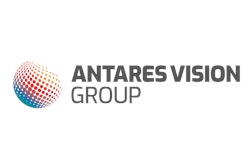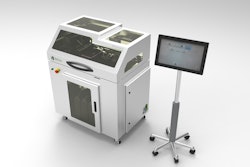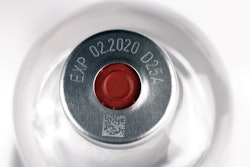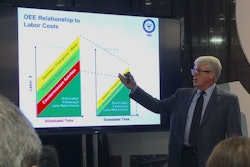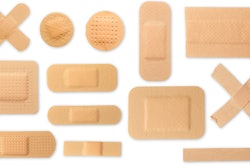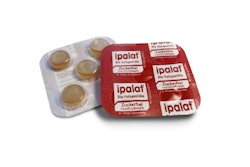On January 1, 2012, Turkey became the first country in the world to implement comprehensive legislation regarding traceability for 100% of the medicines sold in its territory.
This article describes the installation of Antares Tracking System (ATS), an advanced traceability solution from Antares Vision, at the largest pharmaceutical manufacturing plant and the biggest distribution center in all of Turkey, both of which are owned by a major multinational pharmaceutical company. These two projects were carried out in parallel and coordinated with each other. Their size, timing of implementation, and successful results have made them a benchmark of the marketplace.
At the manufacturing plant, the scope is indeed impressive: 24 lines on which all major pharmaceutical formats (capsules, tablets, liquids, etc.) are handled. Many of the lines are highly automated, involving bundlers, shrink wrappers, case packers, robotics, and so on. But on some lines, casing and palletizing are done by hand. Production is typically carried out in two shifts, six days a week, and it leads to the production of more than 150 million units of use (i.e., primary packages such as bottles or cartons) per year.
The distribution center, on the other hand, is delivering more than 120 million units of use per year. It averages out to about 80,000 drug shipments per month, or 2,666 per day, that go to hospitals, pharmacies, clinics, etc. But spikes in the number of drug shipments are not at all uncommon, so that in some cases there might be as many as 4,000 shipments per day.
On top of all the built-in complexity and size of the projects, there was an extremely tight deadline that had to be met. The pharmaceutical company’s purchase order was placed only seven months before Turkey’s 2012 deadline took effect. This meant that the project managers at Antares had to make a number of decisions to guarantee the deployment in time. Among these was the decision to introduce as many ready-to-plug-in modules into the lines as possible. Integrated into these modules are a number of devices, including cameras, hand-held scanners, HMIs, thermal-transfer or ink-jet printers, labelers, and reject mechanisms. If each of these devices had been installed on the packaging lines separately, productivity would have been seriously curtailed. By taking the modular approach, all the devices in a module could be fully tested away from the actual customer production lines, and then the complete module could be installed in several hours.
Module categories
These ready-to-plug-in modules come in five categories that can best be seen at the bottom of Figure 1. In each category, a number of models offering varying capabilities are available. But essentially, the serialization modules are for marking unique codes on primary containers. Bundling modules are for aggregating multiple units of use in a bundle that gets a parent number; the same bundle aggregation station can be configured in one of three ways depending on whether the customer wants to have bundles scanned from the top, from the leading edge, or from the right or left side. Case packing modules are for aggregating multiple bundles with a parent number that goes on a case. And palletizing modules are for aggregating multiple cases with a parent number that goes on a pallet. These four module categories are found in the pharmaceutical company’s manufacturing plant. The packing station module, on the other hand, is more typically used for re-aggregation and decommissioning of containers in the Distribution Center when, for example, a previously created case or pallet needs to be opened in order to modify its contents prior to shipment to a customer. As for the mobile terminals shown in Figure 1, these are used throughout the customer’s operations for a variety of scanning, verifying, and data entry tasks.
Figure 1 also shows how the plant floor production lines are networked with the software systems that are essential to the ATS concept. At the top of the heap, unique codes are generated at the Plant ERP Level. When the ERP allocates a work order, the intervals of the unique codes needed for that work order are communicated to the Antares GTS software that, in turn, generates the full range of codes. Running on a remote server, the GTS is the heart of the overall ATS concept. It sends unique codes to the Antares MTS software, which is designed to control a single packaging line. MTS accesses the proper production information, including serialized codes, from GTS and configures all the devices in the packaging line. This is how thermal-transfer printers, for example, know which unique codes to print on cartons or bottles. MTS also captures production data and code status from devices on the packaging line during production and communicates it to GTS in real time so that statistics, serialized codes, and audit trails can be made accessible to the Plant ERP. Access to GTS is managed through the security levels required by the 21 CFR Part 11 rules, so only authorized operators can access it.
Communication with regulatory agencies is essential in a serialization implementation, and this is where the Antares Notification Tracking System comes in. This software is designed to manage all the communications—inbound and outbound—with the Ministry of Health or Regulatory Agencies in general. Based on a modular structure, it can easily be adapted to future requirements and regulations. According to the chosen configuration, it may be activated manually or can automatically start communications when each work order is completed.
The other software module in Figure 1 that should be mentioned is Warehouse and Shipment Manager, which is used to prepare shipments in the pharmaceutical company’s Distribution Center. It allows re-aggregation and decommissioning of containers by means of automatic or manual devices. When products are shipped, the software interacts with the company’s Warehouse Management System to keep the history of the packages in compliance with the recommendations of regulatory agencies such as, in Turkey’s case, the Ministry of Health.
One more note on the software-related challenges that had to be overcome in this project. Due to the history of the lines in the manufacturing plant and the variety of packaging machinery vendors involved, different IT software architectures were in place when the customer decided to implement serialization. All these had to be accounted for and interfaced for the project to be successful.
Needless to say, in a production environment like this one, network response times are crucial. Any latency in an operator’s query to the data base would negatively affect productivity and Overall Equipment Effectiveness (OEE).
A multidisciplinary team
No matter how flawless the software or how efficient the hardware that was involved, this massive serialization project could not have been successful without close cooperation among working teams. A multidisciplinary working group was composed that included all stakeholders internal to the pharmaceutical company—IT, maintenance, production, quality, engineering, etc.—as well as key engineers from Antares Vision and from Kura Ltd., the local Antares partner in Turkey.
“Antares and Kura have partnered together on many systems over the years, from standalone inspection machines to serialization systems designed specifically with the Turkish regulations in mind,” says Kura’s Ozgur Tansoy.
Massimo Bonardi, Technical Director and co-founder of Antares Vision, also values the broad expertise that the Kura/Antares combination brought to the project.
“Kura technicians spend a lot of time in Italy managing customer FATs and sitting in for training on new Antares products,” says Bonardi. “They have full visibility on product development and give important feedback that helps Antares improve productivity, flexibility, and reliability of its products. With Turkish being the primary language spoken on this project, they were the ideal link between Antares and the customer’s technicians involved in the project, as well as in delivering operator training. Early cooperation and communication among our three working groups—customer, Antares, Kura—was crucial in meeting the tight deadline. It created an environment where potential problems could be anticipated and solved.”
A key goal established by this working team in the earliest stages of the project was to minimize the impact on commercial production in the manufacturing plant by building in as much flexibility as possible where installation and validation were concerned. So even though a detailed installation schedule for all 24 packaging lines was prepared, the team was able to tweak the schedule to fit sudden unforeseen changes in production requirements.
The team also made every effort to optimize the hardware systems involved to guarantee the best operability in every condition and verified the full functionality of the equipment in the harshest environments. This included lines that operate two or three shifts per day. It also included some special integration engineering on the part of Antares and Cognex, the firm whose cameras are responsible for reading and verifying most of the unique codes. This was largely a matter of Antares optimizing its lighting technology and Cognex matching its camera software so that the reflection off the film-wrapped bundles doesn’t interfere with accuracy or speed of scanning.
New SOPs
As serialization involves completely new Operating Procedures and an additional number of devices on the lines, operator training was a crucial aspect of this project. Maintenance engineers had to get acquainted with programming of formats for cameras, printers, and labelers. As for packaging line operators, they had to learn how to manage machinery “exceptions” that surfaced. After all, product reconciliation following a machine jam is one thing when unique serial numbers aren’t in the picture, but it’s an entirely different story when they are. Consequently, a great many training sessions were planned in advance, even before the new machine modules were deployed.
When serialization became a part of everyday production, Antares and Kura engineers were beside the operators ready to help them operate all 24 packaging lines in the most efficient way. While supporting the operators, Antares engineers were able to fully assess the operation of the devices on the lines and detect possible points of improvement that might increase overall performance. This led to a detailed report with a list of suggested improvements, clearly defined for each line, aimed at optimizing OEE. The report included not only fine-tuning of devices such as print-and-apply labelers but also remedies to reduce machine jams.
By the time this enormous project came to its successful conclusion, both customer and vendors were impressed with what they had pulled off. Adriano Fusco, Antares Marketing Director, puts it this way.
“On paper, or in theory, much of this seems pretty straightforward. But once you put it into a production environment where you might be dealing with 300 pieces per minute, you realize just how challenging it is. A pharmaceutical manufacturing plant with 24 lines? It’s huge. How do you find an acceptable way to stop production long enough to install even one of these modular work stations, test it, and validate it? We’re quite proud of what we were able to accomplish, as a team, under a very tight deadline.”



